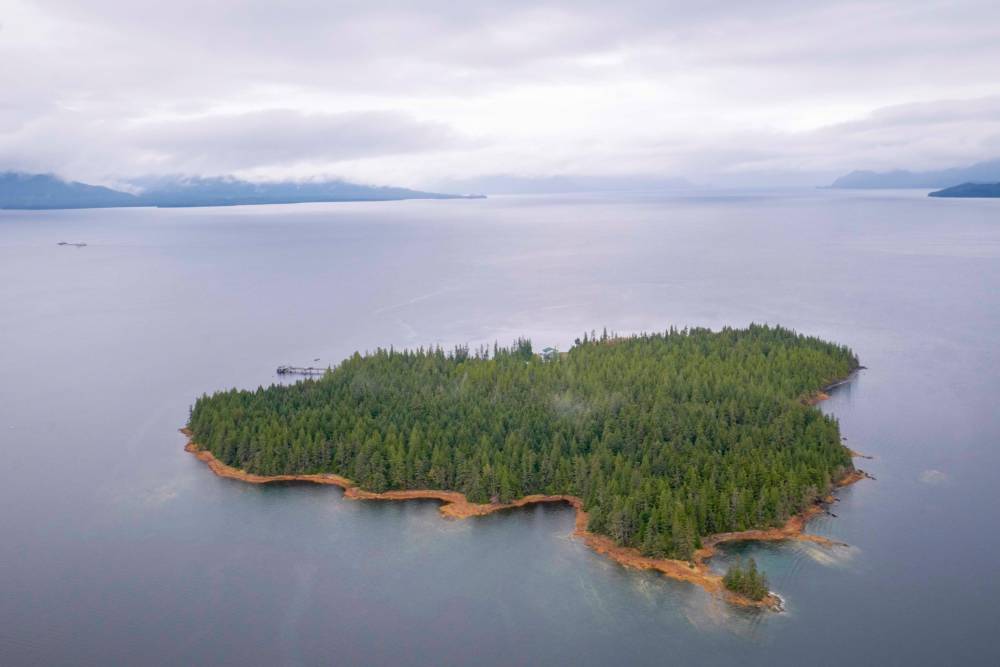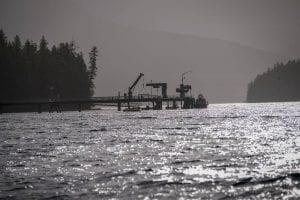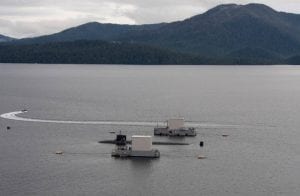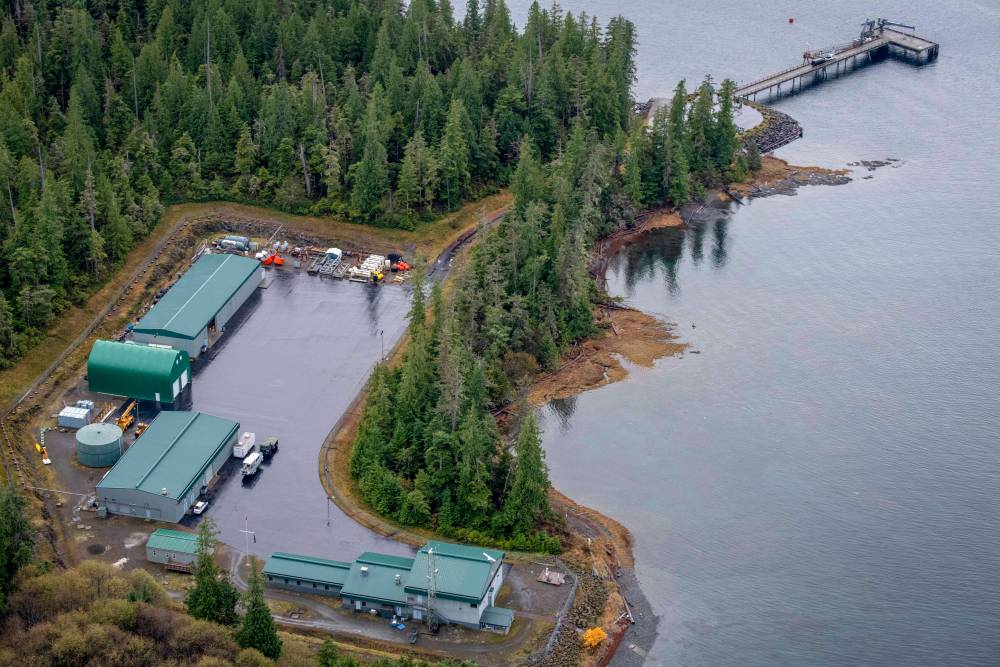
Back Island near Ketchikan is home to the U.S. Navy’s Southeast Alaska Acoustic Measurement Facility, SEAFAC. The facility tests how quiet nuclear submarines are, to make sure they are as difficult to detect as possible.
Some changes have been proposed for the facility’s operations through an updated Environmental Impact Statement. But, as KRBD’s Leila Kheiry reports, those changes – like the submarines themselves – should be difficult for the public, at least, to detect.
As its name suggests, Back Island is an island, so the only way to get there from Ketchikan’s road system is by boat.
Site Manager Jennifer Kelso picks me up from Knudson Cove Marina in one of SEAFAC’s boats, and we head out to the Navy site. It’s a misty day in southern Southeast. We pass rain-shrouded forests topping rocky islands, and rocks covered in seaweed – exposed at low tide.
It’s a quick trip, but once we arrive the rain has picked up.
We sit in a small electric vehicle used for quick transport from SEAFAC’s pier, and talk about site operations before heading to the main facility.

“So on our pier here, you’ll see we have three cranes,” she pointed out. “The first two closest to us are solely dedicated to lifting the float in and out of the water. On the end, we have longshoring crane to lift freight. We can fly boats, our small skiffs, into the water when the tides don’t allow us to launch via our ramp.”
Those skiffs help hook suspension cables to submarines for part of the acoustic testing. SEAFAC tests all the Navy’s Pacific sub fleet, looking at each vessel about every four or five years. That’s a schedule of maybe 10 to 12 a year.
Let’s go through a typical test. A nuclear submarine arrives – secretly – in Behm Canal.
“And typically, the first thing that we do is put some of our folks on board,” she said. “We always have our personnel, that’s typically Navy civilian employees that are dedicated to conducting acoustic trials, we put them on board the submarine.”
That team monitors noise inside the submarine, like pumps and engines. Arrays of submerged hydrophones monitor noise that makes it outside the hull. Analysts at the shore facility check those levels.
While that’s happening, other teams monitor the area to make sure it’s clear of boat traffic. That’s mostly for safety reasons, but it’s also to minimize ambient noise. Kelso said a typical test takes three to five days.

“Minimum, we usually spend two days – 48 hours – in the underway site, where a submarine is traveling back and forth, submerged, between two bottom-mounted arrays of hydrophones,” she said. “Then typically a minimum of 24 hours in our static site.”
In the static site, subs are held captive between two barges, and hydrophone arrays continue listening to the vessel.
So, maybe a dozen tests a year lasting about five days. That’s about 60 days of the year – give or take a few days – for testing. What do they do the rest of the time?
“Maintenance,” she said, laughing. “A lot of maintenance.”
The cranes, facility, hydrophones, electronic equipment, backup generator and much more all have to be ready to go when a sub arrives.
And while it is a secret, technically, the public can guess when a submarine is in the area, because SEAFAC puts out a notice that, when a certain beacon is lit, all boat traffic in the area needs to go dead in the water.
That’s for safety reasons, Kelso said, because if a submarine needs to surface suddenly, you don’t want to be in a boat right above it. It’s also to keep noise levels as low as possible. A boat motor can interfere with testing, because the hydrophones are extremely sensitive.
How sensitive? Glad you asked.
“In addition to traffic, weather can increase the ambient levels quite a bit, so we’ll see fluctuations seasonally based on the weather,” she said. “Wind has a large effect on the ambient levels, rain, even snow. So the sound of snow crystals hitting the surface of the water and melting will raise the ambient levels, which is pretty incredible.”
That’s a very simplified summary of what SEAFAC does. It’s also pretty much what they will continue to do. Kelso said the SEAFAC portion of the federal EIS update is small, and includes just a few key changes.
The one Kelso said is of greatest interest to people is the number of trials allowed in a year.
“The 2015 EIS record of decision lists 43 activities,” she said. “That’s a far greater number than we have historically done, or that I can imagine doing.”
Kelso said the most tests they’ve ever done in a single year is 17. The fewest was five. They’ve averaged nine per year since operations began in 1992.
In the proposed updated EIS, the allowed number would go from 43 to a maximum of 37. Again, Kelso said, they’re unlikely to ever test that many. The EIS provides for the maximum, just in case it’s needed.
“From the public’s perspective, I would not expect the public to see any noticeable difference in our activity or in the way we interact with the public in our shared water space in Behm Canal,” she said.
But what about marine life, like whales? Kelso said the biggest concern for marine life is noise. She said SEAFAC is in Behm Canal because it’s a quiet place to test quiet ships.
“We obviously can’t talk about how quiet our submarines are, but they are very quiet,” she said.
They’re listening for noise, but they hope to hear as little as possible.
SEAFAC’s area on Back Island is about 15-acres, permitted through the US Forest Service. Kelso said they have about a dozen full-time, year-round employees.
The comment period for the draft updated EIS ends Wednesday, June 12. Here is a link to the EIS, and how to submit a comment : https://www.nwtteis.com/






